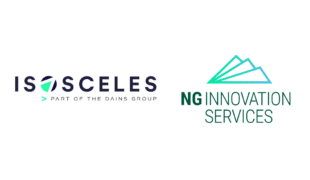Estimated reading time: 4:00 minutes
Technology is transforming the way finance departments in small and medium-sized businesses (SMEs) operate.
Cloud computing, big data and automation are revolutionising this core department, irrevocably augmenting how finance professionals are now analysing every aspect of business performance.
As efforts to embrace and integrate the latest trends gather pace, we explore how technological progress is reshaping the future of the department.
Before the convergence of cloud computing, big data and automation, finance departments in SMEs were dominated by manual core processes and rigid accounting and finance practices.
Although this traditional image is still representative of the way many departments operate, the complexion of the commercial finance department has undoubtedly changed; traditional businesses are attempting to compete with innovative models.
How exactly is technology redefining the finance department?
Cloud computing: Everything, everywhere
Cloud accounting and real-time reporting enable finance professionals and firms to access the information they need from wherever they may be, allowing decisions to be made remotely based on sound business intelligence.
For example, cloud-based accounting platform Xero allows users to aggregate data and visualise financial performance.
Related Article | Will Accounting AI transform the finance function?
With increasing pressure to make financial reporting and analysis more efficient, finance departments can now deploy a suite of affordable IT resources flexibly and efficiently to manage change and improve processes. These resources can be scaled up and down to meet demand, and accessed anytime, anywhere, from fixed and mobile devices.
Big data: The four V’s
Businesses are being transformed by the impact of big data and data analytics; never has a finance team had so much access to such a depth of business intelligence.
The ability to curate, manage and analyse data effectively and efficiently can provide critical insights into systems and transactions at a range of different levels.
For example, data derived from transactions can be used to identify consumer expenditure patterns and capture predicted demand.
As a natural consequence, finance professionals are constantly striving to bridge the chasm between the data-intensive IT department and the process optimisation side of the business.
Related Article | Outsourced Accounting and AccountingTech, what’s the difference?
However, data that is high-volume, high-velocity, high-variety and high-veracity is only valuable once advanced tools have been implemented to reveal meaningful patterns, which means finance professionals are required to acclimate quickly to extract deeper insights from financial data.
A commercially integrated finance department has always been critical. However, it’s the scope of its analysis of information assets which has altered.
The increasing demand for the latter means specialists, like Isosceles, can provide a blend of cost-effective outsourced accounting solutions and interactive business intelligence.
Automation: Unlocking potential
Due to the time-saving nature of new technology, core business tasks, such as quarterly financial reports, balance sheets and profit and loss statements, can now all be produced in a shorter period of time.
Automating these repetitive tasks has unlocked valuable resources within the finance department to enable leaders to focus on areas of real business value.
Finance in the future: How are you going to adapt in the Technology Age?
New technologies are converging to create the ‘new normal’ in an interconnected financial system.
Cloud computing is reshaping the way information is stored and shared between departments; from the way transactions are processed, to the way projects are funded.
Big data is placing increasing demands on financial professionals to interpret and analyse high-volume, high-velocity, high-veracity and high-variety data points and data sets.
Automation of previously manual tasks is unlocking resources and allowing finance professionals to concentrate on higher-value work.
However, the complexity, ambiguity and uncertainty in today’s operating environments mean real value will only be generated once context has been added to abstract information by specialists, like Isosceles.
In this blog, we’ve touched on three technology trends which are creating endless possibilities for finance departments.
As such, the ‘new normal’ promises to present further unforeseen challenges and opportunities, raising the question: How are you going to adapt in the Technology Age?
Follow us on Twitter and LinkedIn.




